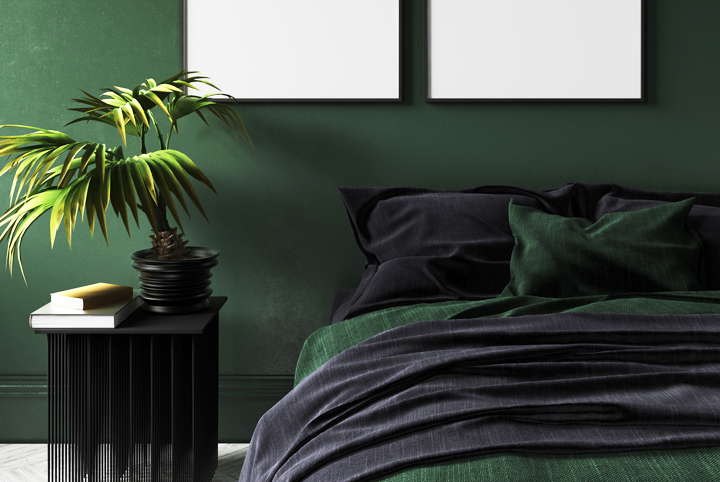
Published October 4, 2013, Updated March 7, 2021
I’m not sure when it happened, but at some point during the last century it seems a decorating law was passed that required the vast majority of all baseboards, mouldings, trim and doors to be painted white. It didn’t matter what white – it had to be white. Painting doors and trim white shines a spotlight on these items, and unless they possess a degree of architectural interest, they probably don’t deserve to be centre stage. The fact is, whether you believe white is the absence or confluence of all colours, it can often do a disservice to your wall colour: many grey/blue walls have been transformed into a juvenile baby blue, and reds made harsh and unwelcoming, when trimmed with white. White can rob colours of their complexities, and it’s the wall colour that takes the fall because all the white is doing is looking clean, sparkling and innocent.
Related: 10 Cool DIY Painting Projects That Will Give Your Old Home New Life
Before we fell under the spell of white trim, homes across the globe had trim that was painted darker than the walls. In fact, it wasn’t unusual for doors, trim and especially baseboards to be painted black. The thinking was that people would inadvertently kick, damage, or get fingerprints all over them and they would likely be covered in dirt and dust. Sound reasoning, actually. Well, perhaps you’re not ready to paint your trim, doors et al black, but here are some different approaches to consider when choosing a colour for trim.

Use a Shade, Tint or Tone of the Wall Colour
Using a lighter (tint), darker (shade) or greyed-out (tone) version of your wall colour is an excellent way to complement your wall. If you choose a paint from a typical sample strip, you can usually go up or down one colour to find your tint or shade, you will probably find your tone, the colour with grey added, on a different strip. The issue of the grey/blue wall becoming baby blue with white trim is solved when the trim is a pale grey/blue – at first glance this technique gives the look of white trim, but because it now shares pigment with the wall, the two work together to reinforce the colour scheme without competing. Going darker with a shade or tone is also a safe bet that delivers high impact results.
Related: How Daring Colours and Antique Treasures Transformed This Designer’s Roncesvalles Rental

Paint Trim and Doors the Same Colour as the Walls
This is an advisable option when trim and doors have minimal features worth highlighting, and a particularly good idea for small spaces, where you don’t want to interrupt the eye as it travels across the room. Breaks in colour create subconscious pauses as we view a space, and the room becomes a series of blocks of colour rather than a more desirable continuous flow. A subtle break can be created by using a glossier finish on the trim. Painting walls and trim the same colour can create a very cozy, enveloping effect.
Related: Common Renovating Costs: Walls, Doors and Windows
Choose a Different Colour Altogether
A yellow room gives you the feeling of an English cottage when paired with a classic deep blue trim, while a rich red dining room will assume an old world elegance with taupe trim and a green living room could look fabulous alongside French grey. Painting your trim a contrasting colour is a more daring approach: you will need to tie in both colours with the decor, and your colour choices will need to be well thought out. But, when done well, the effect can be whimsical, elegant or stately – depending on your design objective. You can pick colours that complement each other, or stick with one from the neutral family and have a little fun with the other. This technique can be used if you want neutral walls – your trim can be the source of colour. And, don’t rule out black – black trim can create a stunning and dramatic effect with very little effort.
Let’s lift the ban on pigment-infused doors and trim and pick colours that will imbue every element in your room with personality. You put a lot of blood, sweat and tears into choosing your wall colour, so optimize your hard work with trim that pulls its weight in your design scheme.
Images courtesy of Getty Images
HGTV your inbox.
By clicking "SIGN UP” you agree to receive emails from HGTV and accept Corus' Terms of Use and Corus' Privacy Policy.



